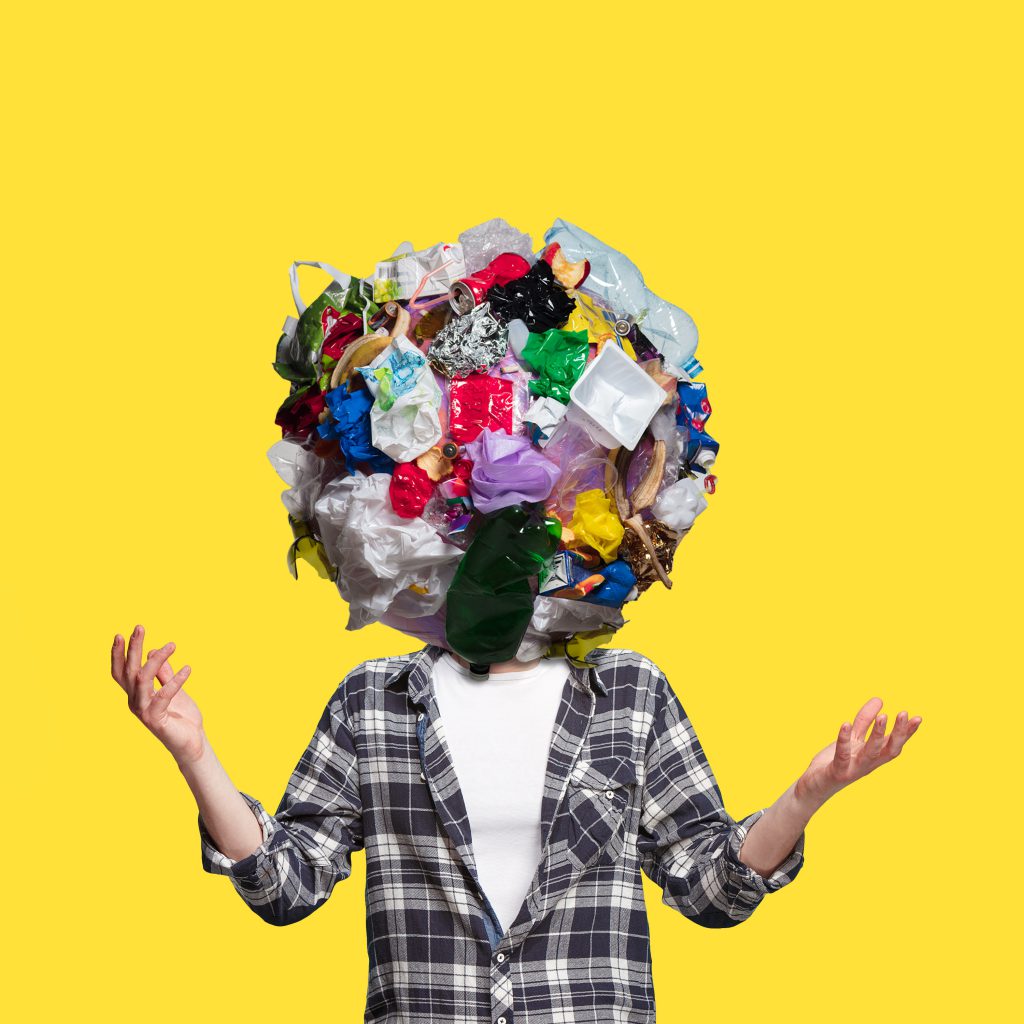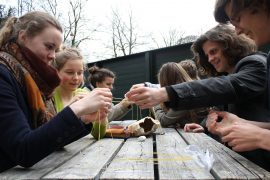A reflection on interdisciplinary teaching conversations between Humanities-based educators
In this long-form piece, Dr Benjamin Nickl, Discipline of Comparative Literature and Translation Studies (University of Sydney), Dr Christopher John Müller, Discipline of Media Studies (Macquarie University) and Dr Marija Grech, Department of English (University of Malta) explore the attention ecology within higher education, from current challenges to new ages. Through their interdisciplinary lens, they discuss the effects of our current ‘attention haze’ on learning environments and the necessity of recalibrating our educational approaches to foster sustainable attention and meaningful interactions amidst the clamour of modern distractions.
While essential for urban nightlife and socialising, the pervasive orange glow that hangs over big cities at night is known to disrupt sleep patterns and cause disorientation and poor navigation in all kinds of animals. Exposure to an excess amount of this manufactured luminescence at night results in headaches, stress, and anxiety, which is where light pollution and attention pollution stemming from digital devices share striking similarities.
Just as excessive artificial light drowns out the dark beauty of the night sky, the constant bombardment of information from our technology gadgets—laptops, phones, or tablets—overwhelms our attention, obscuring deeper understanding and critical thinking. Both are additions to our environment that somehow disrupt the balance of a system, circadian as well as attentional.
The attention haze
The information overload from media technologies that we use in higher education, especially since the COVID-19 pandemic and the advent of Zoom, creates an invisible haze that disrupts our centre of attention. With countless devices making us feel like they are dwarfing us and thus overwhelm and overpower the user’s learning experience, this is true for offline and online education spaces.

Much like light pollution obscuring the night sky, these technologies can hinder students’ ability to concentrate on their learning by obscuring focus. The same may hold true in reverse for our teaching. There is, put simply, too much that competes for our attention: an excess number of things to do, read, listen to, write or watch, and altogether operate, offering a lack of fixedness in knowledge to hold onto and to feel secure enough in understanding it as a stepstone forward to the next stable platform on one’s learning journey.
Even as, or maybe precisely because, a host of gizmos and widgets and, most recently, generative AI (Artificial Intelligence) applications, claim to facilitate education, a quick look at the so-called “engagement metrics” offered by The University of Sydney’s Canvas or Macquarie University’s iLearn platforms show that learners are oftentimes less engaged than one would hope.
In the tech-steeped ecologies of higher education, breaking through the digital ‘orange haze’ that permeates most classrooms and learning sites thus turns into a key question: how do we mitigate this attentional pollution and reduce the digital distractions to effectively reach learners?
A clearer, easier view
Can we envisage a pedagogy that would renew, focus, and facilitate attention rather than hide from view the learning space as a captivating experience of collaborative inquiry and a way forward? Are there other strategies to conceive of successful learning that resist observable impact metrics associated with online engagement, such as the measurement of likes, clicks, views, and listens?
In societies that seem to have declared mediated and manufactured spectacles as the goal to attract “attention” and promote its capture and fabrication regardless of the tenuity, how can we recalibrate the pedagogical effort that learning zones of attentional focus and internal ease require—offering to learners the same relaxed and relieved sensation that comes with an unobstructed and direct look at the stars in the night sky?
These questions form the backdrop for the interdisciplinary conversations among the authors of this think piece.
Sustainable attention in Humanities education

Addressing attention pollution in education may call for sustainable, resilient pedagogies that treat attention as a fragile competence easily to be lost. Fostering a culture of focused resilience in the wake of a global pandemic and the changed circumstances we live in now, the challenge lies in creating learning spaces for this new reality.
How can we as university scholars enhance our ability to better connect the students to learning contents on campus and off, seeking viable alternatives to traditional teaching methods so that we facilitate the learners’ access to complex ideas?
The aim would be to declutter and not overstuff.

From this perspective, our task would be to envision new, attention-driven teaching strategies. Teaching materials and learning environments would have to better serve us as a sustainable set of targeted tools to hone attention as a valuable skill. One which has become increasingly scarce over the past few years and, admittedly, already well before then.
All of this will also have to be done in an informed dialogue with technology, not in an effort against it.
Emptying lecture halls and dropping attendance rates show that student attention has diminished. This is due to several factors, ranging from increases in cost of living to housing affordability and long commutes next to a hundred other things unfolding in a learner’s life.
It is, however, also because of said screen devices and content capture facilities and teaching recordings that are deeply engrained in university infrastructure. They do grant, we must stress, some student cohorts that did not have it before a greater measure of access to higher education.
But how can we then work within our educational communities to create and implement sustainable strategies of attention where we can learn to live within certain limits? Artificial excess pollutes and yields the opposite of clarity, so we should think of the labour that students already invest in us by paying attention to us and our teaching, and the knowledge we seek to convey in the university environment.
While we actively work to produce attention and secure interest in what each of us calls our area of expertise that we professionally direct expert attention to, what implications would any change in this ecology have for learners in the immediate and the long term? And, at the same time, for us?
What if we shift the pedagogy focus on the current and future environmental conditions of our ability to focus? And, more specifically, where to best place this focus?
New impulses for educational attention: ‘with’ the thing and not ‘against’ it

All this requires a refocusing on learning as a recombinant system: learner, teacher, and the ‘thing’, with the ‘thing’ acting as a placeholder for all kinds of learning objects, interactions, and processes.
It may be navigating an online learning site, working with copious amounts of complex knowledge bound in books or articles, giving a lecture, facilitating in-classroom interactions, or considering the process of writing a traditional student essay.
Our attentional relationship to all of them—these things of learning— will need to move into the foreground as part of a curiously complex ecology of higher education in the third decade of the 21st century. We say complex because it has become exponentially harder to tell pollutants from propellants in this space.
Never have individual learners and their attention behaviours been made more visible and trackable than in Zoom-box windows with cameras and mics pointing at them. Learners’ log-on and log-off behaviours and learning site views have been made transparent with aggregate data collection.
Thus artificially magnified and made hyperaware of their performance footprint, anxieties abound when learners are called upon in class. Their energy goes into the performance of answering instead of thinking about what the answer itself means to them.
Misplaced focus is not new, of course. But like the Canvas or iLearn site that leads away from objects of learning and not to them because of inaccessible navigation, we will need to ask what learning spaces and designs and processes allow learners and us to work with and not against the objects of instruction.
In the final instance, the question that we will have to contemplate in many different situations, with each new chatbot incarnation and next wave of tech arriving, centres around an environmental practice of attention. One that distracts learners, and us, from the distractions. And what it takes in each instance to do so.
Key takeaways for L&T practice
- Reflect on Attention Pollution: Consider how you can minimise the ‘attention haze’ from devices and applications in your teaching by setting clear classroom use guidelines. For instance, promote specific times for technology use or encourage students to switch off non-essential notifications during class.
- Co-Develop Attention-Focused Pedagogies: Design your teaching methods to nurture attention as a key skill. This could involve using teaching strategies that consider the out-of-class distractors that students experience or including students as design partners in the learning environment.
- Promote Regular Breaks: Incorporate short breaks during your lectures to help students maintain and recalibrate their attention levels. These breaks can also provide opportunities for students to reflect on what they’ve learned and allow teachers to gauge attention levels.
- Engage with the ‘Thing’: Encourage students and colleagues to actively engage with the specific elements of learning resources. For example, you could discuss if Canvas’ or iLearn’s digital engagement metrics can adequately capture student attention or what to do when a new technology’s novelty value fades.





